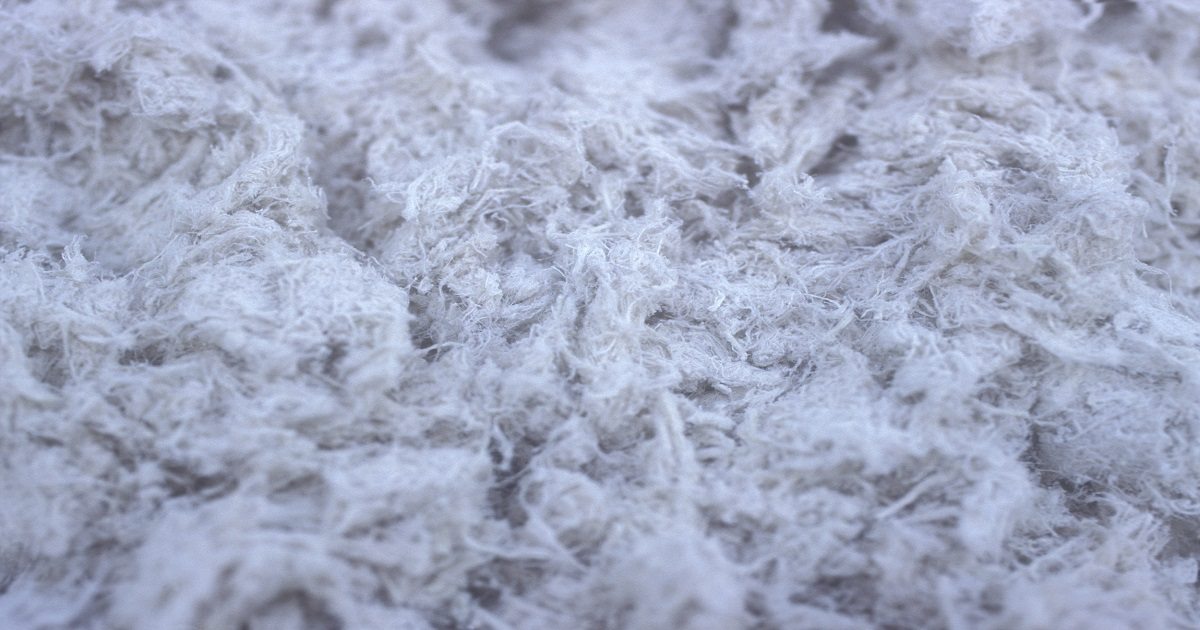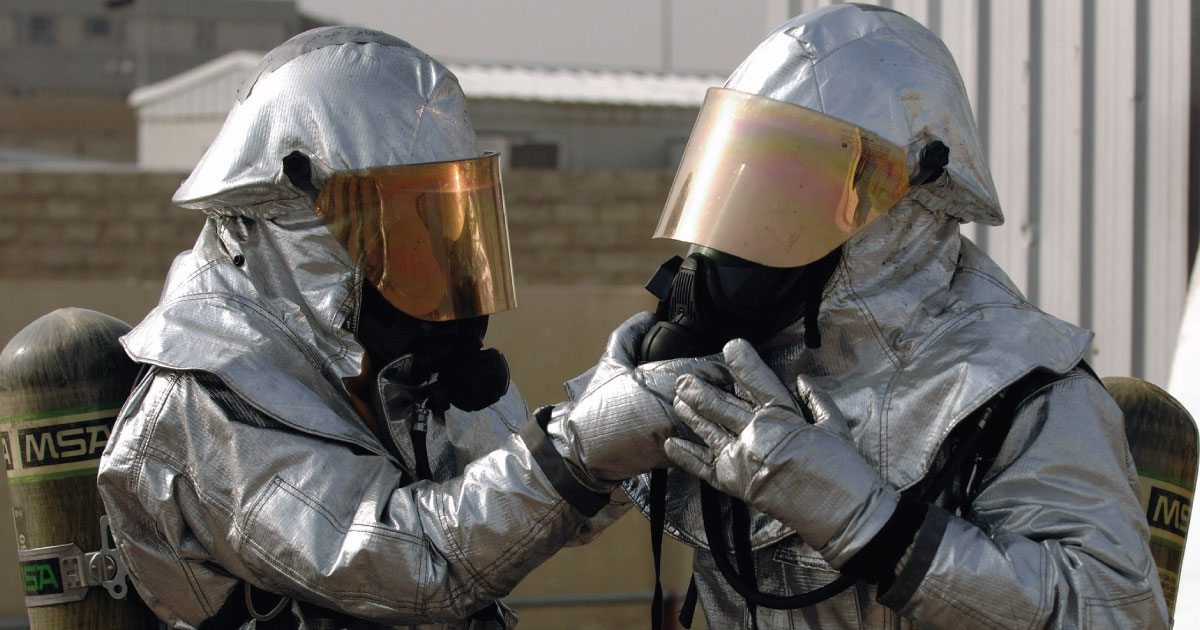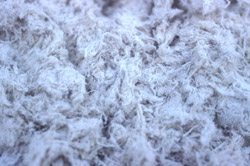Month: November 2012

Increased Rate of Mesothelioma Detected Near Former PA Asbestos Factory
Researchers at the University of Pennsylvania have received a grant from the National Institutes of Health to document how people were affected by asbestos exposure who lived near an asbestos factory in Ambler, Pennsylvania. Exposure to asbestos dust is linked to serious respiratory diseases including lung cancer and mesothelioma, a cancer of the lining of the lungs.
The Pennsylvania Department of Health has identified an increase in the rate of mesothelioma around Ambler, where an asbestos factory operated for decades, according to a Penn Medicine news release this month. Ambler is just north of Philadelphia.
Dr. Fran Barg, an associate professor at University of Pennsylvania School of Medicine, told the CBS News affiliate in Philadelphia that Ambler has been profoundly affected by mesothelioma. The Ambler Boiler House, near the town’s revived Butler Avenue district, operated for nearly a century as an asbestos-manufacturing plan, but was shuttered in the mid 1970s.
Today, residents the West and South Ambler communities remain at risk of environmental exposure to asbestos and are potentially at increased risk of developing mesothelioma, the Penn Medicine researchers say. Although the factory has long been closed, symptoms of asbestos disease take decades to appear. Current and former Ambler residents who had occupational or environmental exposure to asbestos in the 1960s or 1970s or more recently could develop mesothelioma as a result of that past exposure.
Asbestos fibers when inhaled may lodge deep in the chest cavity, causing inflammation that eventually leads to disease. Mesothelioma is incurable, but there are treatments for mesothelioma to help manage the disease if it is diagnosed before it has reached an advanced stage.
“We know there is an existing health risk, but that’s just one piece of the problem,” Barg said in a Penn press release. “These communities suffered great social and economic consequences when the asbestos factory closed, and today, they are still trying to recover from that loss.”
The five-year study is to document the asbestos impact on the community and help local leaders make decisions about the future of the former asbestos factory site in the community. Barg and fellow researcher Edward Emmett, a professor of Occupational and Environmental Medicine, will develop a storehouse of information online and at the Chemical Heritage Foundation about the asbestos-related health risks in the community.
According to the U.S. Environmental Protection Agency, environmental regulators have overseen the cleanup of more than a million cubic yards of asbestos waste that was dumped on a 25-acre site nearby.
Ambler residents can contact Dr. Fran Barg directly for information about the study by emailing her at [email protected].

Demolition of Houses Damaged By Hurricane Sandy Poses Asbestos Exposure Risk
Approximately 200 houses in Staten Island, Queens and Brookyn battered by Hurricane Sandy will be demolished in coming months, The New York Times reported Sunday. The houses slated for demolition are all older structures and have building materials containing asbestos.
Thousands of people have stepped forward to take part in the cleanup since Hurricane Sandy struck New York and New Jersey in late October. Dr. Raja Flores, chief of thoracic surgery at Mount Sinai Hospital, said the cleanup was in some ways comparable to the cleanup after the Sept. 11 attacks. “You have all these innocent people trying to help and they are subjecting themselves to asbestos, a known carcinogen,” Dr. Flores told The Atlantic about asbestos exposure after the hurricane.
Asbestos exposure causes serious respiratory diseases including asbestosis, a chronic scarring of the lungs, lung cancer, and mesothelioma, a cancer of the lining of the lungs. Symptoms of mesothelioma typically take decades to appear after exposure, but the cancer is aggressive once symptoms appear.
Asbestos was used in floor and roofing felts, drywall, floor tiles, insulation, spray or ceiling coatings until the 1980s when its production was curtailed. But when older houses are renovated or demolished, the asbestos fibers may be released into the air and inhaled if workers are not wearing proper breathing protection. Being exposed to asbestos fibers in the air is the major risk factor for mesothelioma, according to the Centers for Disease Control.
Demolition and constructions workers and anyone clearing construction debris may be at risk of exposure to asbestos if they disturb asbestos containing materials. The U.S. Department of Labor’s Occupational Safety and Health Administration has standards to protect workers from exposure to asbestos during construction and demolition. The standards describe the hazards of asbestos work activities and detail specific requirements for each category of work. OSHA has field staff in New York providing technical support and training for those involved in the cleanup.
New York building inspectors have declared nearly 900 building unsafe to enter, affixing red tags to signal they are unsafe to enter. But not all buildings that are tagged will be demolished.
About 2,500 to 3,000 people are diagnosed with the mesothelioma each year in the U.S. Most are older workers, retired workers and veterans who were regularly exposed to asbestos in a workplace or during military service decades ago. Asbestos disease typically takes 20 years to 50 years to appear. But once symptoms show, the disease often advances quickly and is difficult to manage with current treatments such as chemotherapy and radiation.
Know more about mesothelioma and how you can deal with it.

A Story of Faith and Hope of a Mesothelioma Caregiver
Jennifer Gelsick lives a quiet life in St. Marys, Pennsylvania with her husband, Michael, and their dog, Gus. She and her husband run their own business, and Jennifer has time to enjoy her hobbies including cooking, reading and taking long walks around their neighborhood with Gus. She also dedicates much of her time to her church. But over the last year, her father’s diagnosis of pleural mesothelioma upended Jennifer’s serene life and tested her faith.
Ultimately it was Jennifer’s faith, and her father’s strength, faith and positive attitude while battling asbestos cancer that helped her get through the year. Not only did she and her father survive the year, but Jennifer believes it was through a series of miracles that her father is now cancer free.
Like many people in the United States, Jennifer had heard of mesothelioma through television ads, but she didn’t have an understanding of the disease. She didn’t even realize it was a form of cancer. She usually left during the commercials to clean the dishes or grab a snack before settling back in front of the TV.
Now, Jennifer knows more than she ever wanted to know about the dangers of asbestos and the health issues that the widely used building material can cause many people. And Jennifer wants to educate as many people as possible about mesothelioma and other asbestos-related diseases.
Jennifer will be offering readers of Mesothelioma Help the story of her family’s journey through months of treatment and recovery as her father battled mesothelioma. Specifically, Jennifer looks forward to sharing stories of faith and hope and helping others realize that there is life with mesothelioma, and there is life after mesothelioma.
Please join us in welcoming Jennifer to Mesothelioma Help as she tells her story as a caregiver and a daughter of a mesothelioma survivor.
Know more about Mesothelioma and how you can deal with it.

Risk of Asbestos Exposure for Workers in Aftermath of Hurricane
The cleanup after Hurricane Sandy will involve thousands of workers tearing down and repairing flood damaged houses and structures. The federal Occupational Safety and Health Administration is warning Hurricane Sandy cleanup workers and members of the public in New York and across the region to be aware of the danger of asbestos. Asbestos fibers cause deadly respiratory diseases including mesothelioma, a form of cancer.
Asbestos, a mineral fiber, was added to many building materials because of its strength and insulating properties until the 1980s. When houses and buildings containing asbestos materials are renovated or demolished, the renovation and demolition activities often generate airborne asbestos fibers. The fibers are microscopic, making them more hazardous because you can inhale them without knowing it. Asbestos is classified as a known human carcinogen by the U.S. Department of Health and Human Services and the International Agency for Research on Cancer.
While the use of asbestos has been curtailed in many workplaces, construction and demolition workers remain at risk of asbestos exposure today because of past construction practices, according to the National Cancer Institute.
OSHA has regulations that construction industry employers must follow to protect cleanup workers from exposure to asbestos. The construction industry standards require employers to follow various standards to protect workers from inhaling asbestos fibers. The detailed standards vary depending on the type of work being undertaken, the amount of asbestos in the air and other factors. Among the requirements is an initial assessment of a demolition or renovation project to estimate the expected exposure to asbestos during the work.
You and your employer can find more information about how to obtain a copy of the booklet, Asbestos Standards for Construction.
Approximately 2,500 to 3,000 people are diagnosed with mesothelioma each year in the United States. Most are older workers, retired workers and veterans who had regular exposure to asbestos for a period of weeks or months in a workplace or during military service.
Mesothelioma is an aggressive form of cancer. While there is no known cure for the disease, doctors have the most success in managing the disease when it is diagnosed early. Treatments for mesothelioma include surgery, radiation and chemotherapy.

Medical Milestone: Gene Therapy Drug Approved To Fix Genetic Code Typos
Mark your calendar: A new era in medicine has begun.
The European Union has licensed for sale the first gene-therapy drug in the Western world. Gene therapy is a type of medicine that treats disease by replacing defective genes with functioning genes. It holds great potential for treating diseases caused by defective genes, though it has remained largely experimental and confined to research laboratories to date. One day, patients with mesothelioma may benefit.
The European Commission on Friday granted approval to Glybera, a gene therapy medicine that treats a rare inherited disorder called lipoprotein lipase deficiency (LPLD), according to the BBC News.
http://www.bbc.co.uk/news/health-20179561
People with the extremely rare disease are unable to produce enough of an enzyme to digest fat properly. Fat levels in the blood may increase dramatically. A person with the enzyme deficiency may suffer life-threatening pancreatitis attacks as well as early onset of diabetes.
The drug developed by a Dutch company, UniQuire, in a single injection that contains a gene that helps the body produce the necessary enzyme.
According to The Wall Street Journal, the European action is a milestone for the field of gene therapy. In an article in the WSJ, Len Seymour, a professor of gene therapy at Oxford University who is unaffiliated with Glybera, said the approval begins to exemplify what genetically coded medicines can do.
UniQure plans to file an application with the U.S. Food and Drug Administration next year, seeking regulatory approval for the drug, the company said in a statement. No gene therapy medicines have been approved in the United States so far.
Researchers have been studying the effectiveness of gene therapy in treating various diseases in clinical trials since a landmark discovery in 1989 that an abnormality in one gene caused the disease cystic fibrosis. That led to the premise that doctors could treat a patient’s disease by identifying an abnormal gene mutation and replacing the defective gene with a corrected copy. But scientists have run into many set backs in the development of gene therapy.
While the initial applications of gene therapy are likely to involve rare diseases that may be cured by replacing a single defective gene, researchers also are exploring the potential of gene therapy for treatment of cancer including mesothelioma, a cancer caused by asbestos exposure.
The University of Pennsylvania has an ongoing gene therapy clinical trial for patients who are newly diagnosed with mesothelioma and patients whose cancer has not responded to other treatments. Patients receive a combination of chemotherapy and a new type of gene therapy called immuno-gene therapy that uses a modified common cold virus to trigger the patient’s immune system to destroy cancer cells. The doctors have been encouraged by the response of mesothelioma patients receiving the experimental treatment, Dr. Daniel Sterman an associate professor at the University of Pennsylvania said in a news release.
http://www.uphs.upenn.edu/news/News_Releases/2011/12/igt-cancer/
Approximately 2,500 to 3,000 people are diagnosed with mesothelioma each year in the United States. Most are older workers, retired workers and veterans who were exposed to asbestos fibers decades ago in a workplace or in military service.
Know more about mesothelioma and how you can deal with it.
Free Mesothelioma Patient & Treatment Guide
We’d like to offer you our in-depth guide, “A Patient’s Guide to Mesothelioma,” absolutely free of charge.
It contains a wealth of information and resources to help you better understand the condition, choose (and afford) appropriate treatment, and exercise your legal right to compensation.
Download Now